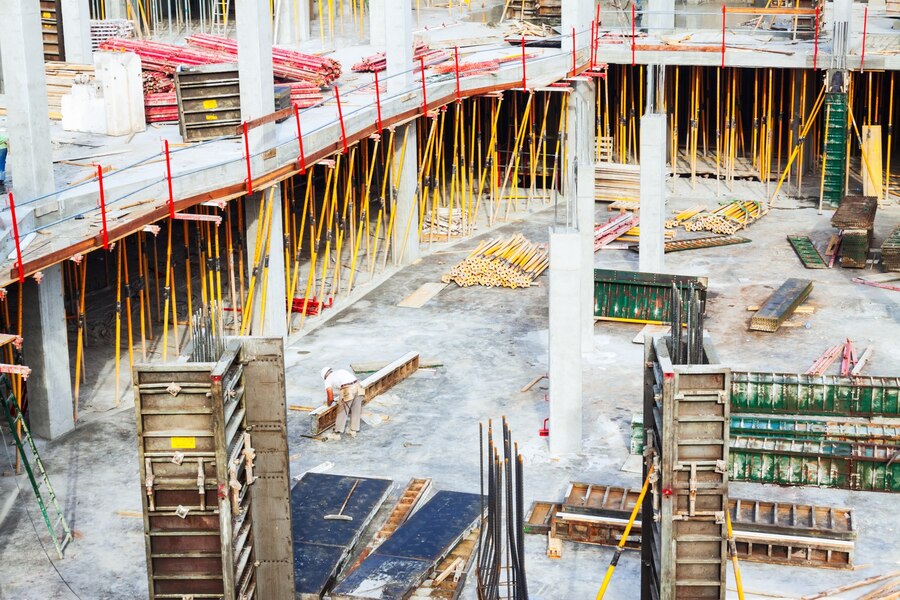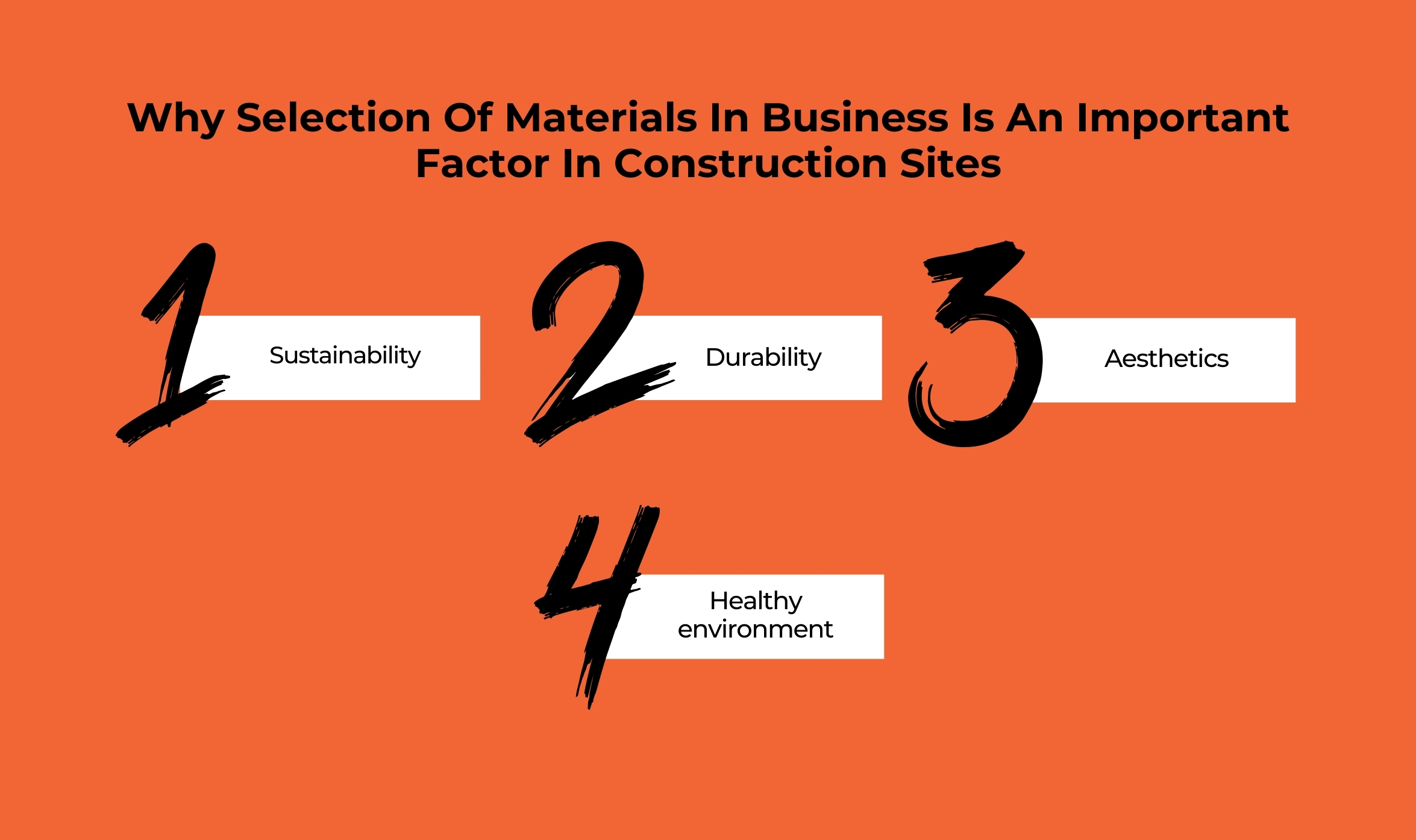Essential Building Materials or Construction Sites: A Comprehensive Guide
4 Mins Read
Published on: 26 June 2023
Last Updated on: 07 December 2024

toc impalement
When it comes to construction sites, selecting suitable building materials is crucial for the success of any project. As per construction experts Sand4U, the choice of materials impacts not only the structural integrity but also the durability, aesthetics, and overall performance of the building.
This comprehensive guide will explore the essential building materials commonly used on construction sites. We will delve into each element from foundation to roof, highlighting their properties, benefits, and considerations.
Whether you’re a homeowner embarking on a renovation or a construction professional seeking knowledge, this blog will be a valuable resource to aid your decision-making process.
Why Selection of Materials in Business is An Important Factor in Construction Sites

Whether it is building renovation or, say, a new project, you have to be mindful of the selection of building materials. It is unquestionably an essential element in contemporary building design.
Sustainability
The world faces nature’s wrath as increasing fossil fuels increases global warming. Due to increased carbon footprints, different projects are looking to use materials like timber and bamboo to keep it at bay.
For example, building projects use recycled steel and reclaimed wood to create unique and visually pleasing materials.
Durability
When constructing your house, you must make it most durable. Moreover, you have not built it several times. Hence, it becomes one of the factors in the selection of raw materials.
For example, the predominant use of steel and concrete is preferable in extreme weather conditions. Therefore, selecting the building material becomes one of the core aspects that define the success of your building.
Aesthetics
Another significant factor that helps you select construction and building materials is aesthetics. Yes, you got it right; aesthetics play a crucial role in your life, so you must heed it. Geometry and architectural patterns are essential aspects of modern designs. Therefore, there are many areas where you can work out aesthetics.
For example, if you want the best designs for your home and want to give it a sleek look and feel, you can use the glass. It is an architecturally friendly material that helps you get the desired shape.
Healthy Environment
Some materials contain harmful materials. Therefore, their selection becomes an essential aspect. These materials are made up of toxic chemicals that harm the air quality. Consequently, it may lead to increasing health-related issues and complexities.
Therefore, the selection of materials is one of your most significant concerns. The stakeholders have to take care of the health and well-being of the people before selecting the construction and building materials for their houses. Talk to expats about selecting the housing materials for your construction project.
Building Materials That You Are Looking for Comprehensive Guide
construction and building materials technology are fast undergoing a sea change. The stakeholders directly related to the construction industry are trying to identify the present issues. Based on them, they go on to select the building material. This section discusses the assets and materials for today’s construction sites.
Foundation Materials
The foundation is the backbone of any structure, providing stability and support. Common foundation construction and building materials include concrete, reinforced steel, and gravel. Concrete is widely used due to its strength, durability, and versatility.
Reinforced steel bars, or rebar, are often embedded within the concrete to enhance its tensile strength. Gravel, known for its excellent drainage properties, is used to form the foundations’ sub-base. When selecting foundation materials, such as soil conditions, load-bearing capacity, and climate.
Structural Framing Materials

Structural framing materials form the skeleton of a building. Wood, steel, and concrete are popular choices. Wood is lightweight, renewable, and cost-effective, making it suitable for residential projects.
Steel offers exceptional strength and is favored in commercial and high-rise buildings. Concrete, known for its fire resistance and durability, is commonly used in residential and commercial construction. Factors such as building design, load requirements, and budget considerations influence the selection of structural framing materials.
Exterior Wall Materials
Exterior wall materials play a vital role in protecting the building from the elements while enhancing its appearance. Brick, stone, stucco, and siding are commonly used. Brick and stone offer durability and a timeless aesthetic appeal.
Stucco, a plaster-like material, provides insulation and weather resistance. Siding, available in various materials such as vinyl, fiber cement, and wood, offers versatility and low maintenance. Climate, architectural style, and desired aesthetics guide the choice of exterior wall materials.
Roofing Materials

The roof protects the building from weather elements and contributes to its energy efficiency. Common roofing materials include asphalt shingles, metal, clay or concrete tiles, and slate. Asphalt shingles are affordable, easy to install, and widely used.
Metal roofing provides durability, longevity, and energy efficiency. Clay or concrete tiles offer a distinctive appearance and excellent durability. Slate roofing, known for its elegance and longevity, is a premium option. Factors such as climate, budget, durability, and desired aesthetics influence the selection of roofing materials.
Interior Finishing Materials
Interior finishing construction and building materials add functionality, aesthetics, and personalization to a building. Drywall, flooring materials, paint, and cabinetry are essential components. Drywall, a versatile material, is used for wall and ceiling finishes.
Flooring materials include hardwood, laminate, tile, and carpet, each with its characteristics and benefits. Paint provides color, protection, and ambiance. Cabinetry offers storage solutions and enhances interior design. Factors such as durability, maintenance requirements, and design preferences drive the selection of interior finishing materials.
Conclusion
Choosing suitable construction and building materials for construction sites is vital for ensuring structural integrity, longevity, and aesthetic appeal.
By understanding the properties and considerations of foundation, structural framing, exterior walls, roofing, and interior finishing materials, construction professionals and homeowners can make informed decisions, leading to successful construction projects.
It’s always safe to consider the help and assistance of the experts before selecting building materials.
Additional:


















Comments Are Closed For This Article